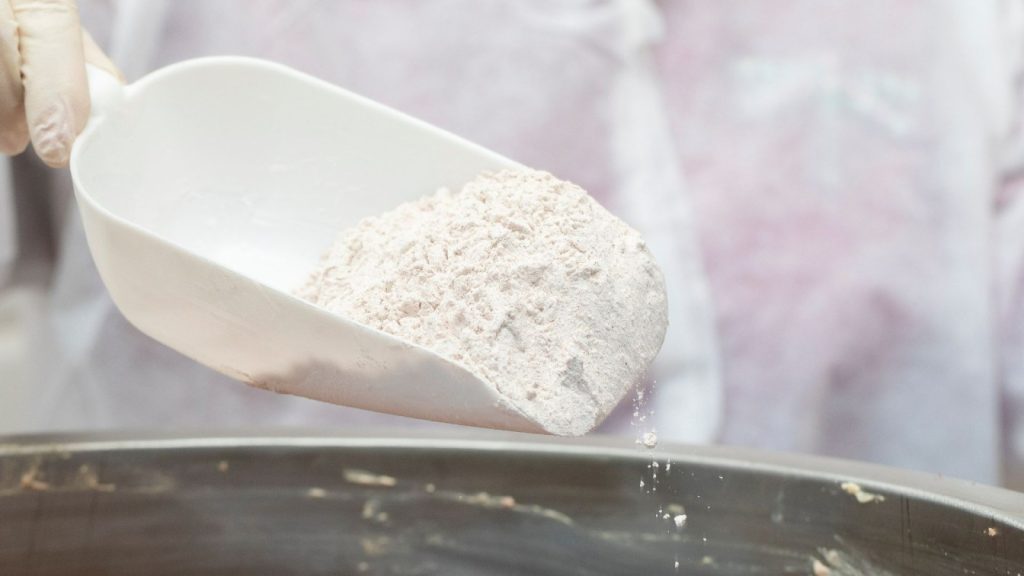
Baking powder is a staple ingredient in baking, known for giving cakes, muffins, and various baked goods their light, airy texture. Its effectiveness in baking is unmatched, and understanding its properties is crucial for achieving the perfect rise in your recipes. Let’s dive into what makes baking powder unique and how it differs from other leavening agents like baking soda.
What is Baking Powder?
An acid (often cream of tartar), a base (sodium bicarbonate or baking soda), and a moisture-absorbing agent (such as cornstarch) are the three main ingredients of baking powder, a chemical leavening agent. Carbon dioxide gas is created when baking powder is combined with liquid and heated. This gas creates bubbles, which cause the batter or dough to rise and expand, producing baked items that are fluffy and well-aerated.
The magic of baking powder lies in its ability to simplify baking. Because it contains both an acid and a base, it doesn’t require any additional acidic ingredients to react. This makes it perfect for recipes where other acidic components, such as buttermilk or yogurt, are absent. The inclusion of cornstarch not only keeps the powder dry but also prevents premature reactions during storage.
Double-Acting Baking Powder
Most baking powders available on the market today are double-acting. This means they release carbon dioxide in two stages: first, when mixed with wet ingredients at room temperature and, second, when heated in the oven. This two-step process ensures a steady rise, giving your cakes and muffins a consistent texture. Double-acting baking powder is particularly valuable for recipes that require longer preparation times, as it ensures the leavening action is effective until baking is complete.
Baking Powder vs. Baking Soda
Baking soda and powder have different uses, despite the fact that they are frequently used interchangeably. As a pure base, baking soda, commonly referred to as sodium bicarbonate, needs an acid to activate its leavening properties. Baking soda will react with acidic ingredients like vinegar, lemon juice, or cocoa powder to create carbon dioxide, which will aid in the rising of your batter.
On the other hand, baking powder already contains the acid necessary for the reaction. This makes it an all-in-one leavening agent, suitable for recipes that do not have naturally occurring acids. However, if you use baking powder in a recipe that already contains acidic ingredients, the result may be overly tangy or dense. For balanced flavors and a light crumb structure, it is important to measure your leavening agents correctly.
Using Baking Soda for Cake
Baking soda is essential when making cakes that need a significant rise and have acidic ingredients. When combined with elements like buttermilk, vinegar, or molasses, baking soda generates bubbles that expand the batter. However, baking soda for cake should be used cautiously, as too much can give a metallic or bitter aftertaste. It’s all about achieving the right balance to ensure your cake is fluffy and delicious.
Tips for Perfect Baking Results
Accurate Measurements: Always use the correct amount of baking powder or baking soda as specified in your recipe. Too much can result in a dry, crumbly texture, while too little will prevent your cake from rising properly.
Fresh Ingredients: As time goes on, leavening agents lose their effectiveness. By looking at the expiration date, you can make sure your baking soda and powder are fresh. A teaspoon added to a small bowl of hot water is another way to evaluate baking powder; if it fizzes vigorously, it’s OK to use.
Mix Quickly and Bake Promptly: Once your batter is mixed, bake it immediately. Both baking powder and baking soda start reacting as soon as they come into contact with wet ingredients, and delaying the baking process can reduce the leavening effect.
Conclusion
Baking powder and baking soda are fundamental to baking, each playing a distinct role in creating the fluffy and tender baked goods we love. By understanding the differences and knowing when to use each, you can elevate your baking skills and produce cakes and pastries with the perfect rise and texture. Keep experimenting and enjoy the delicious results!
